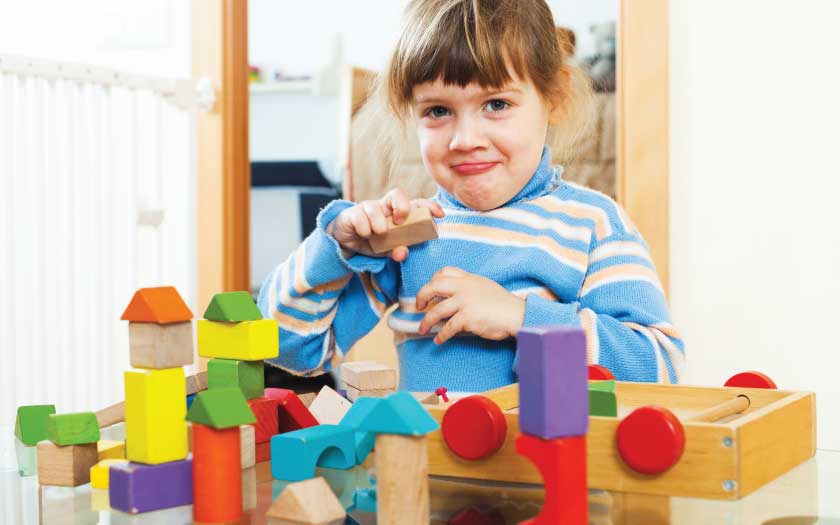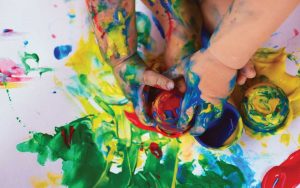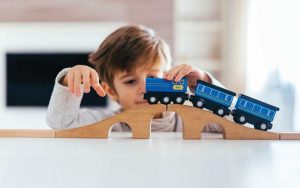Young or old, it’s not easy to walk past a toy shop without at least glancing into it for a glimpse (or a long gaze!) at all colourful and inviting sight of all those toys. Still, visual appeal aside, toys play an integral part of a growing child’s life in terms of physical and cognitive development.
While a child plays, he’s making full use of his mind and motor skills and so it makes sense to conclude that what he plays with matters! Read on…
The true objectives of toys
If you were to survey young parents today on the main objective of a toy, you might get different answers among them. Some may feel that toys are just playthings that keep little ones happy, while others may find that toys are useful learning tools for children. Some parents feel that toys should just be a part of childhood, whether or not they help in a child’s development.
Whichever way we feel about it, when we take into account the exposure our children have to toys and how much time spent playing with them, it makes sense to think about the objectives of toys and if they do play a part in a child’s development.
When we take into consideration how much time our children spend with their toys, it inevitably becomes much more important for us to make conscious choices in terms of what we offer them to play with. Other questions to ask yourself include: Will the toys that we played with in our childhood days be alright for our kids today? How many toys should your child have in his or her toy basket? Are expensive toys worth their price tags?
What’s the big deal anyway?
While not all of us can fully recall the toys we used to play with when we were kids, it did help shape our childhood years and help us grow. It’s because would have used them to learn many things – like how to share, divide, take things apart and put them back together, learn about shapes and colours, and much more. This is why we conclude that ultimately, parents’ choices on what kind of toys their children play with will leave an impact on their little ones’ childhood development, memories, and experiences.
Age appropriateness
A toy has to be suitable for a child’s age for it to be appreciated! For instance, a baby will probably not be able to play with a toy that’s too big. Likewise, a five-year-old child may find a teething toy not challenging enough to pique his interest. So, it is crucial to consider a child’s age when you purchase a toy.
However, relying on the age indication of a toy’s packaging may not necessarily work out in some cases, for example, when a child is developing at a slower pace, or, if a child is more advanced in his development compared to his peers. Hence, parents also have to know their child’s capabilities when considering the type of toys to buy.
Apart from that, here is a general guide that works for most children, according to their age.
Newborn to 6 months: Strong visual and audio appeal
To understand what kind of toys young infants and babies will need, you’ll have to understand more about their favourite pastime, that is to gaze at everyone and everything around them, especially during the first few weeks of their lives.
Brightly coloured toys catch their eye – so colourful mobile toys hung over their crib will be perfect for them. They also like to check out their limbs too, and this is where rattle toys that fit around their wrists and/or ankles come in handy, for they will surely find them suitably entertaining!
As they approach their six-month mark, babies will find other kinds of toys interesting and fun – as long as they can hold a toy firmly and place it in their mouths! They’ll also enjoy being propped up on an adult’s lap and read to from books with bright, colourful pages.
Good toys for infants and babies below the age of 6 months:
- Rattles of all kinds, baby mobile toys including musical ones
- Large rings, squeeze toys, teething toys, soft dolls, textured balls, and vinyl and board books
- Books with nursery rhymes and poems, and recordings of lullabies and songs
- Mirrors for them to look into and amuse themselves with
7 to 12 months old: Toys for early physical and cognitive development
For 7 months onward, a baby who is developing well will be busy trying to move around by means of crawling, scooting, rolling over, etc. They’ll constantly be pulling themselves up, and standing. Their attention span is very short during this time, although children this age do tend to pay attention to things they like on the television screen – cartoons, advertisements, etc.
For better physical and cognitive development though, it’ll be much more advisable to get your little one interested in toys that will challenge his mind and motor skills. For instance, babies this age enjoy trying to find hidden objects and placing things in and out of containers. When picking out toys, try working around these factors.
Good toys for older infants:
- Typical of babies this age, they might also love playing with plastic bowls, large beads, balls, and nesting toys – anything that they can pile up, stack, or take out from.
- Things to build with – large soft blocks and wooden cubes
- Large balls, push and pull toys, and tunnels to crawl into are excellent to exercise their large muscle groups.
- When in the mood for some pretend play, they will enjoy playing with puppets, dolls, plastic and wood vehicles with wheels, etc.
1-year-old: A variety of well-selected toys
In terms of attention span, it does not get better, for one-year-olds can hardly ever stay put long enough to pay attention to anything other than their favourite TV show, perhaps. If parents place extra effort from the beginning, their little ones may end up fans of baby books, whereby they’ll enjoy being read to while propped up on an adult’s lap.
They also tend to enjoy playing next to (but not necessarily with!) other children, while watching and observing what others are doing. Parents need to pay a lot of attention to them at this age as they enjoy exploring their environment, sometimes without fear whatsoever.
Good toys for 1-year-olds:
- Things to pretend with—toy phones, dolls ( with dollhouses), baby carriages and strollers, dress-up accessories (scarves, purses), puppets, stuffed toys, plastic animals, and plastic and wood “realistic” vehicles
- Recordings with songs, rhymes, simple stories, and pictures
- Things to create with—wide non-toxic, washable markers, crayons, and large paper
- Things to build with—cardboard and wood blocks
- Board books with simple illustrations or photographs of real objects
- Large pegboards, puzzles, toys with parts that do things (dials, switches, knobs, lids), and large and small balls
2- 3 year-olds (toddlers)
Toddlers are rapidly learning language and have some sense of danger. Nevertheless, they do a lot of physical “testing”: jumping from heights, climbing, hanging by their arms, rolling, and rough-and-tumble play. They have good control of their hands and fingers and like to do things with small objects.
Good toys for toddlers
- Safe wood puzzles (with 4 to 12 pieces), blocks that snap together, objects to sort (by size, shape, color, smell), and things with hooks to hone their building skills
- Buttons, buckles, and snaps
- Blocks, smaller (and sturdy) transportation toys, construction sets, child-sized furniture (kitchen sets, chairs, play food), dress-up clothes, dolls with accessories, puppets, and sand and water play toys for some dramatic pretend play
- Large non-toxic, washable crayons and markers, large paintbrushes and fingerpaint, large paper for drawing and painting, colored construction paper, toddler-sized scissors with blunt tips, chalkboard, and large chalk – All to encourage the hidden artists in them
- Picture books with colourful, intricate details
- CD and DVD players with a variety of music
- Large and small balls for kicking and throwing, ride-on equipment (but probably not tricycles until children are 3), tunnels, low climbers with soft material underneath, and pounding and hammering toys, all for some healthy exercise!
Resist showing kids how to play
It’s important to allow your children to discover the role and objectives of toys themselves. Why show them what they ‘should’ do with a toy when they can have so much fun doing whatever they want to? If parents could just let go of their expectations when it comes to playing, they will be rewarded by a peek into a child’s wonderful imagination and potential!
HERE are some things to look for when selecting toys for your children, according to the Waldorf approach to education through play.
- Good quality, durability
- ‘Playability’
- Anything healthy for humans and the planet
- Natural materials that feel good to all our senses – including visually beautiful toys, toys that feel good to hold.
- Toys that can be put away in 5 minutes
- Non-competitive, social toys
- Toys that are toys – where ‘learning’ is not forced.
Open-ended toys: Why children need them
Children are more intelligent than you think and when left to their creativity, they may amaze you with their capabilities! They tend to be more receptive to ambiguity than those who are constantly restricted when it comes to playtime. Children need free, undirected play for creative growth, self-reflection, and decompression Play is a “happy talent” and open-ended play helps foster happy talent in a relaxed way. Here are some of the ways open-ended play works:
- No pressure. With no expectations from parents and a bo predetermined outcome, the open-ended play does away with the pressure of having to accomplish or achieve something out of playing. It allows children to focus on creating based on inner inspiration. During play, children have choices and decisions to make. This format offers great potential for self-discovery.
- No ‘mistakes’. Since trial and error is part of open-ended play, unintended mistakes cause children to pause and wonder. “Errors” produce fascination and foster new creation and when left to their own devices, self-initiating behaviors are developed.
- A sense of true, kiddie freedom! Open-ended play gives children a sense of freedom and autonomy to develop initiative and self-confidence. They enjoy making choices themselves, affirming their ability to be responsible and self-directed.
A point to ponder what it comes to toys
There are many toys out there today that have specific functions or have a clear, ‘right’ way of playing with them. These toys may come with a manual even, directing parents on the correct way to play with them. If you think about it, these aren’t exactly toys. Toys, by nature, should generate creativity and imagination in children, and they should be allowed to have fun playing with them any way they want to.
Examples of good open-ended toys
- Balls
- Wooden blocks
- An empty box, or boxes inside boxes
- A cardboard tube
- A spade, a bucket, and some sand/dirt/snow
- Large pieces of fabric
- Jars with lids
- Age-appropriate dolls
Throw these out (or, don’t buy them)
- Broken toys that cannot be safely mended
- Toys that have missing pieces
- Developmentally inappropriate toys
- Toys that leave nothing to your child’s imagination
- Toys come with social pressure to you buy more/ collect. Only buy what you think will benefit your child.
- Anything too complicated or that breaks easily
- Toys with batteries, make electronic noise, flashes – generally high stimulus.
- Toys that encourage violence and/or dangerous play
- Toys that depict evil/tyrant characters
- Anything environmentally unfriendly or toxic
Note: Parents need to keep in mind that while all of the above are good examples, many other items can fall into the category of open-ended toys, as long as they allow children to use their creativity and imagination. However, parents have to ensure that the items offered as toys are safe – no sharp parts; no parts that can be easily broken off; does not endanger the child in any way; does not encourage harsh, inappropriate, or offensive behaviour.




